Early impressions of the Apple wireless AirPods had us worried the little white earbuds wouldn’t work with non-Apple sources, but the new W1 chip is actually device agnostic. In the company’s own words, “AirPods do work with non-Apple devices via Bluetooth. You lose the magic as a result.”
That means you can technically pair them to any Bluetooth source, but Apple certainly isn’t the first company to come out with completely wireless earbuds. Starting back in January at CES, we’ve seen plenty of headphone companies cutting the cable this year, perhaps in anticipation of Apple’s “courageous” move to rid the world of 3.5mm plugs.
Several of these brands got help from Kickstarter and Indiegogo funders to launch. As a result, we can’t guarantee their long-term reliability aside from our initial impressions, but they have a few things in common: they all use Bluetooth to connect to a music source, and they include a battery case to hold a few extra charges.


Now playing:
Watch this:
What headphones, audio devices work without the headphone…
8:58
Most of the earbuds in this round-up are significantly more expensive than their wired counterparts, but some also offer additional features like active noise cancellation, fitness analysis and even augmented-reality access to find-tune your aural environment.
Sure, the sound quality of Bluetooth headphones doesn’t measure up to that of wired headphones and it’s another plug to add to your crowded power strip. But if you’ve never tried a pair of totally wireless earbuds, you’re in for a truly liberating experience — as long as you don’t lose them along the way.
Samsung Gear IconX
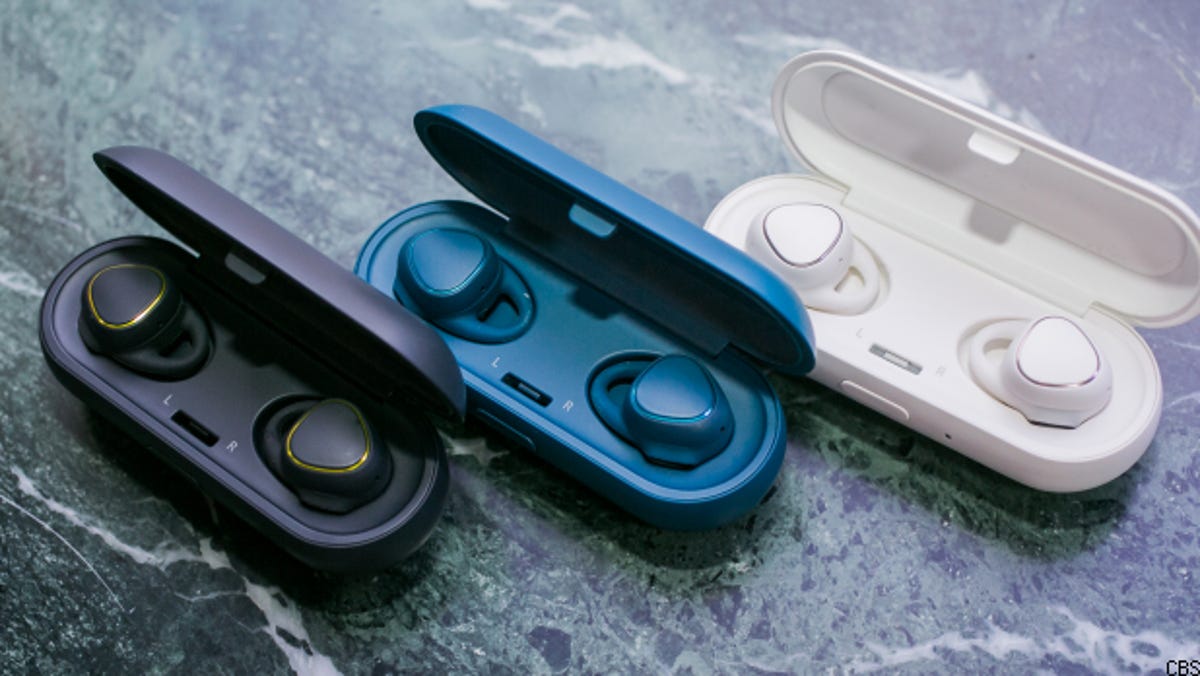
The Gear IconX wireless earbuds nestle in their own charging case, which tops off the battery life twice.
Sarah Tew/CNET
Samsung is now in the fitness earphone game with the Gear IconX — they’re small Bluetooth earbuds that combine music listening with fitness tracking by way of Samsung S Health sync capability, but they also pair with Endomondo, MapMyRun, Runkeeper and Strava to serve as a Bluetooth heart-rate monitor.
They work with anyone who has an Android 4.4 phone — sorry, no iOS support — but the music playback part of the Icon X is limited to storing MP3s, or streaming music from your phone. They nestle in their own charging case, which tops off the battery life twice. The IconX battery life is estimated at 3-ish hours on its own as a fitness tracker and music player, or an hour and a half when paired and streaming from a phone.
The Samsung Gear IconX earphones are available now on the Samsung website for $199 USD (£150, AU$265).
Earin
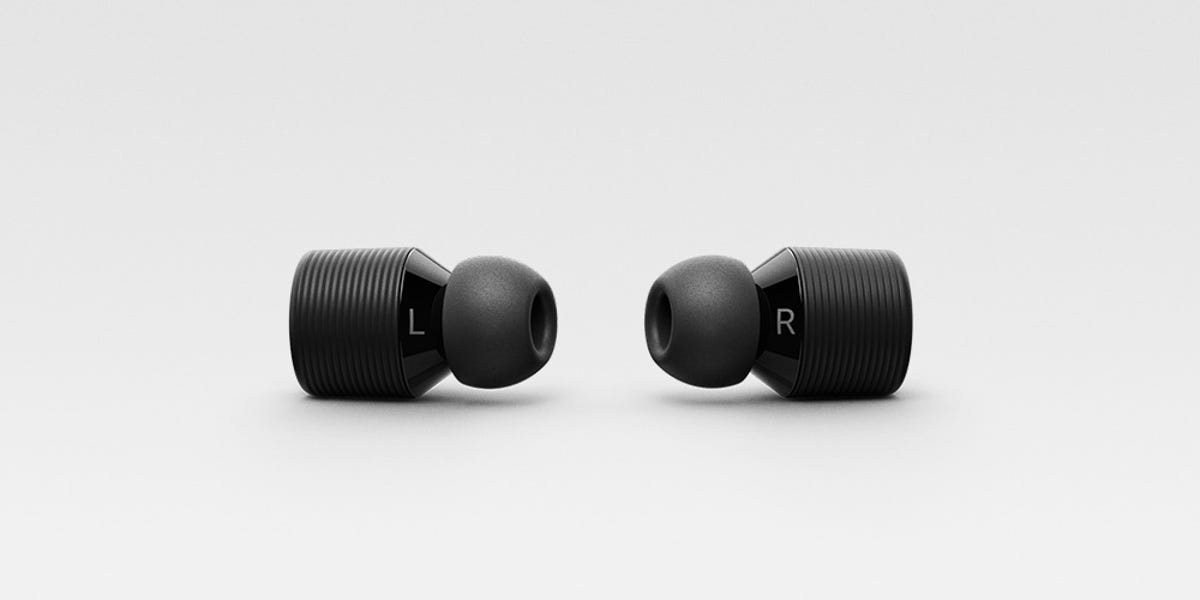

The Earin headphones’ battery lasts two and a half hours, and the charger can boost it up to 100 percent three full times.
Earin
We got a quick glance at the Earin headphones at CES this year and were impressed with their simple, clean design and durable build. The company includes two pairs of Comply memory-foam ear tips so you can get a proper insertion seal, which is important to enhance the audio quality of any headphone, wireless or not.
The box comes with a set of ear stabilizers as well for an extra secure fit, and the Earin app available for iTunes, Android and Windows 10 Mobile lets you tweak the bass level and monitor the remaining battery life in each earbud. The cylindrical charging case is slightly bigger than a tube of lipstick and can recharge the headphones up to three times.
You’ll need it, too, since the earbud batteries only last about two and a half hours of continuous play.
The Earin wireless earbuds are available now on the Earin website for $199 USD (£150, AU$265).
Motorola VerveOnes and VerveOnes+
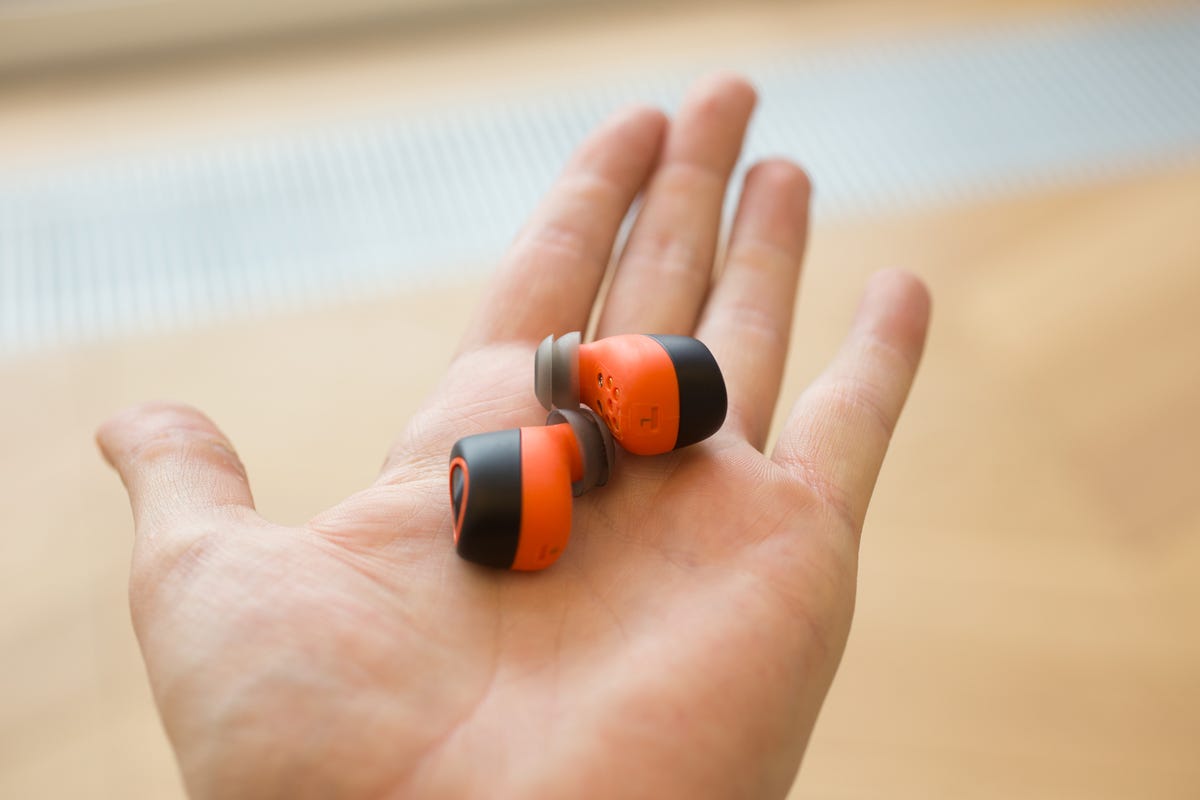

The Motorola VerveOnes are part of the company’s VerveLife outdoor wearables collection.
Andrew Hoyle/CNET
Certified with the IP57 standard, the Motorola VerveOnes+ are designed for active use and outdoor environments with full protection against dust and sweat. You can also fully immerse them in water, which could make them a great partner for swimmers looking to add music to an underwater workout. The regular VerveOnes model is exactly the same, minus the waterproofing.
Once secured in your ears, both models offer Siri and Google Now support and 3.5 hours of battery life, although the included case can store up to 12 hours of usage and will recharge the earphones from zero to full in around 90 minutes.
The Motorola VerveOnes+ are available now on the Motorola website for $250 (£190, AU$330).
Erato Apollo 7
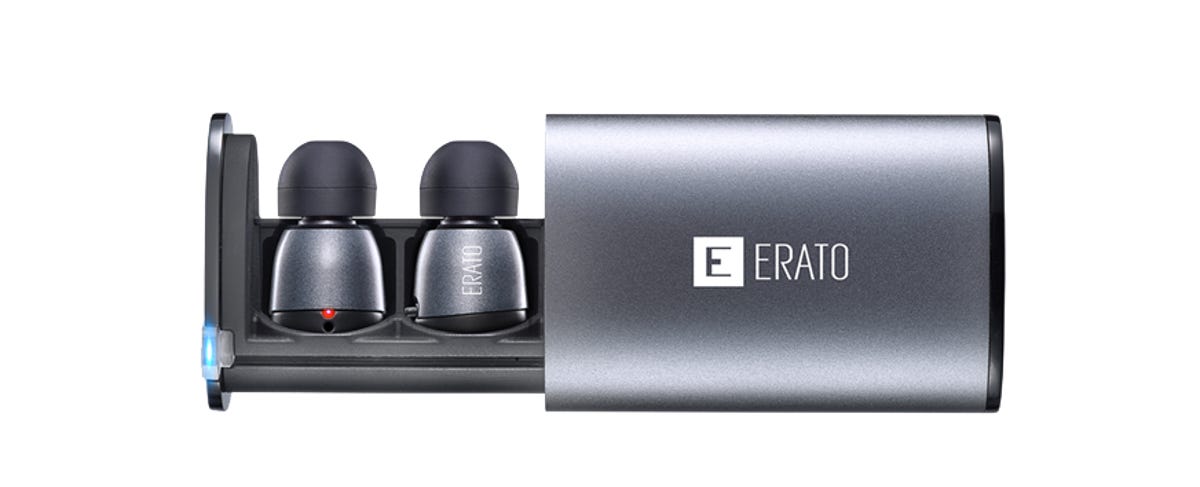

The Erato Apollo 7 have a larger housing than others on this list, but the dynamic driver could be a worthwhile trade-off for their size.
Erato
As opposed to the Earin and Bragi Dash headphones that have balanced armature drivers embedded in each earpiece, the Erato Apollo 7 feature dynamic drivers for an overall better low-end response. In other words, you’ll supposedly get bigger bass on these guys, but that’s a manufacturer’s claim so we’ll have to get them in house to hear for sure.
To assist with the sound, the Apollo 7 includes both silicon and Comply memory foam ear tips so you can experiment with the seal and in turn, the bass reach as well. The Eratos are water resistant and last for three hours before you have to stick them back into the magnetically-sealed case, which can hold two additional charges.
The Erato Apollo 7 earphones are available now on the Erato website for $299 (£226, AU$408).
Onkyo W800BT
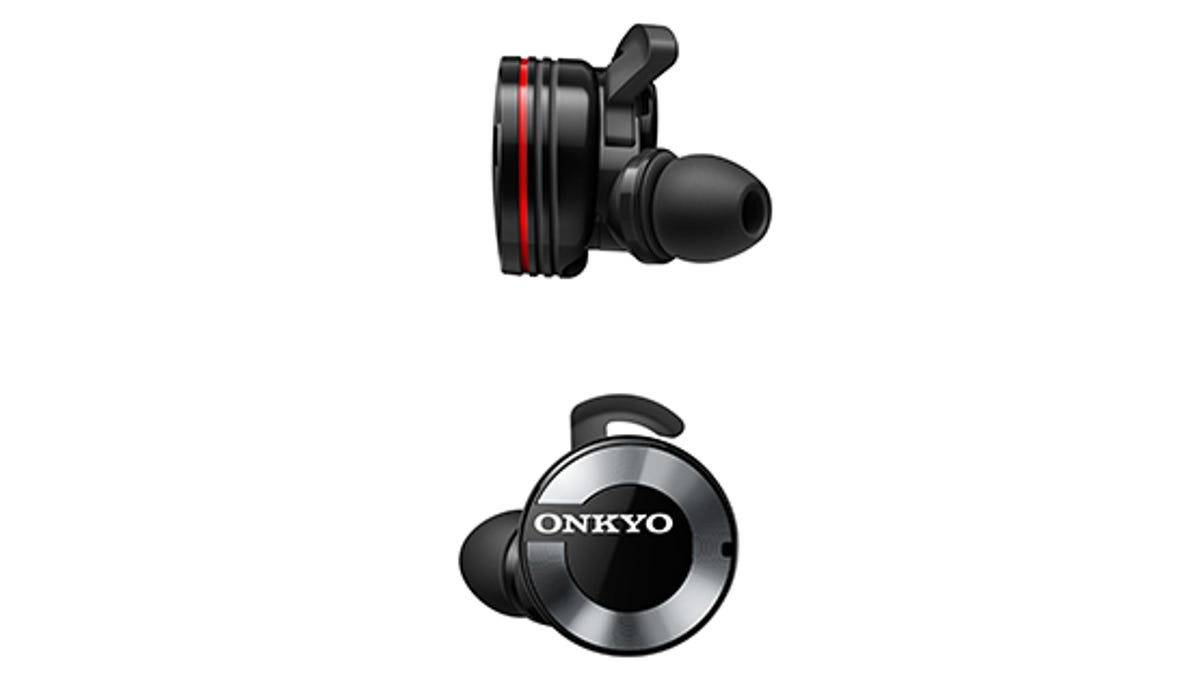

The Onkyo W800BT wireless headphones have a built-in microphone for taking phone calls.
Onkyo
Onkyo was one of the first brands out of the gate with its own pair of wireless in-ear headphones called the W800BT. A small plastic flange on each earpiece braces up against the inside of your ear for added security, and the charging case has a built-in USB cord so you can charge anywhere with an available port.
Each earpiece has a 8.6mm driver that can produce a frequency range of 6Hz to 22kHz, and in our experience it’s one of the better-sounding headphones in this list. Of course, that doesn’t mean they sound nearly as good as a wired headphone, but they deliver an impressive amount of bass and midrange sparkle for a Bluetooth connection.
The Onkyo W800BT ‘phones are available now on the Onkyo website for $299 (£226, AU$408).
Doppler Labs Here One
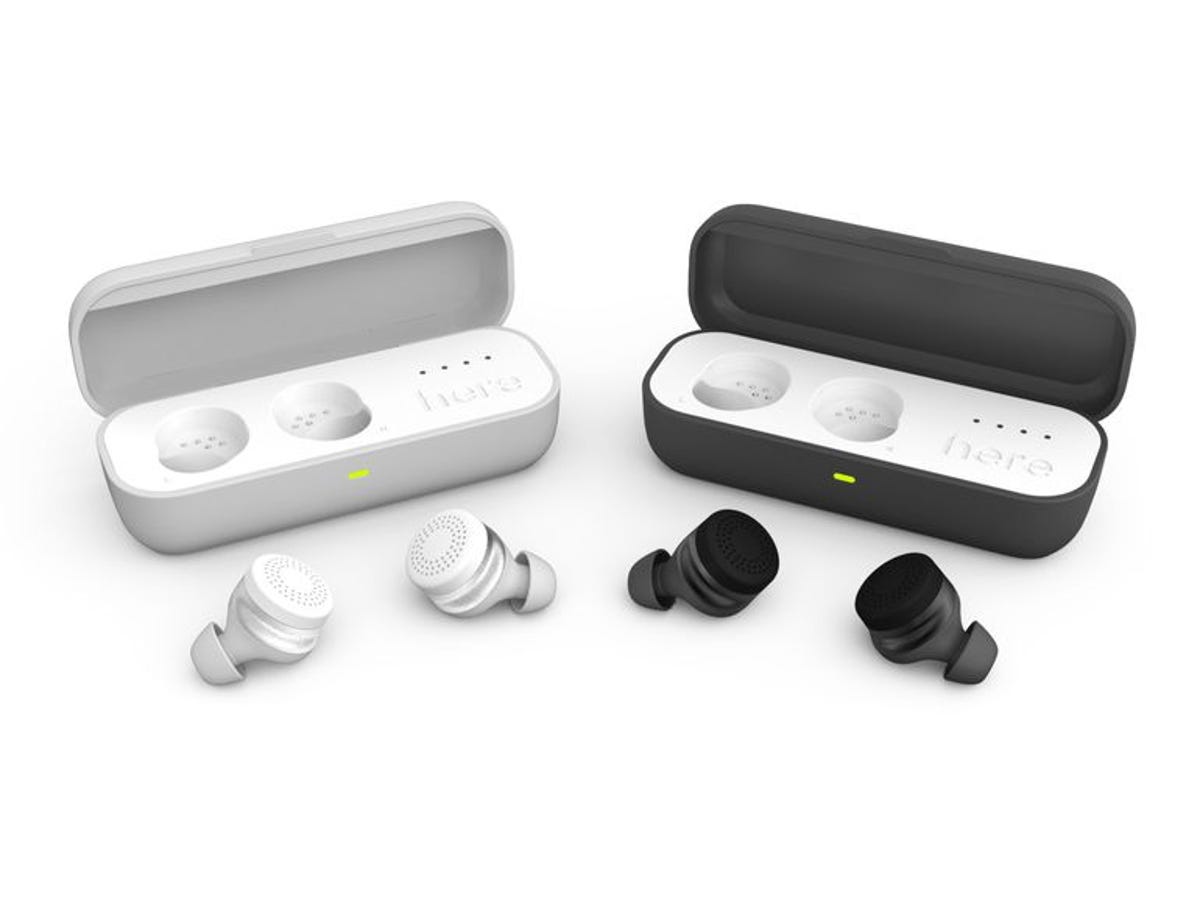

The Doppler Labs Here One offers what the company calls “adaptive-filtering smart listening.”
Doppler Labs
The Here One by Doppler Labs offers what the company calls “adaptive-filtering smart listening.” When they ship in November, they aim to deliver a potent combo of next-gen noise-canceling and Bluetooth music streaming that’s primed and ready to work with your digital assistant of choice.
The Here One is actually the second evolution of the company’s “in-ear computers.” Like their predecessors, the Ones have multiple processors to help identify background noise and can create ambient filters on the fly using direction microphones embedded in each of the two independent earpieces.
The new model adds the ability to listen to music in addition to a set of EQ settings, noise/frequency filters and another layer of “adaptive” filters, which Doppler Labs promises will filter out — or enhance — sounds around you: a siren, nearby conversation, or a crying baby.
The Doppler Labs Here One earphones will ship this fall for $299 (£226, AU$408).
Kanoa
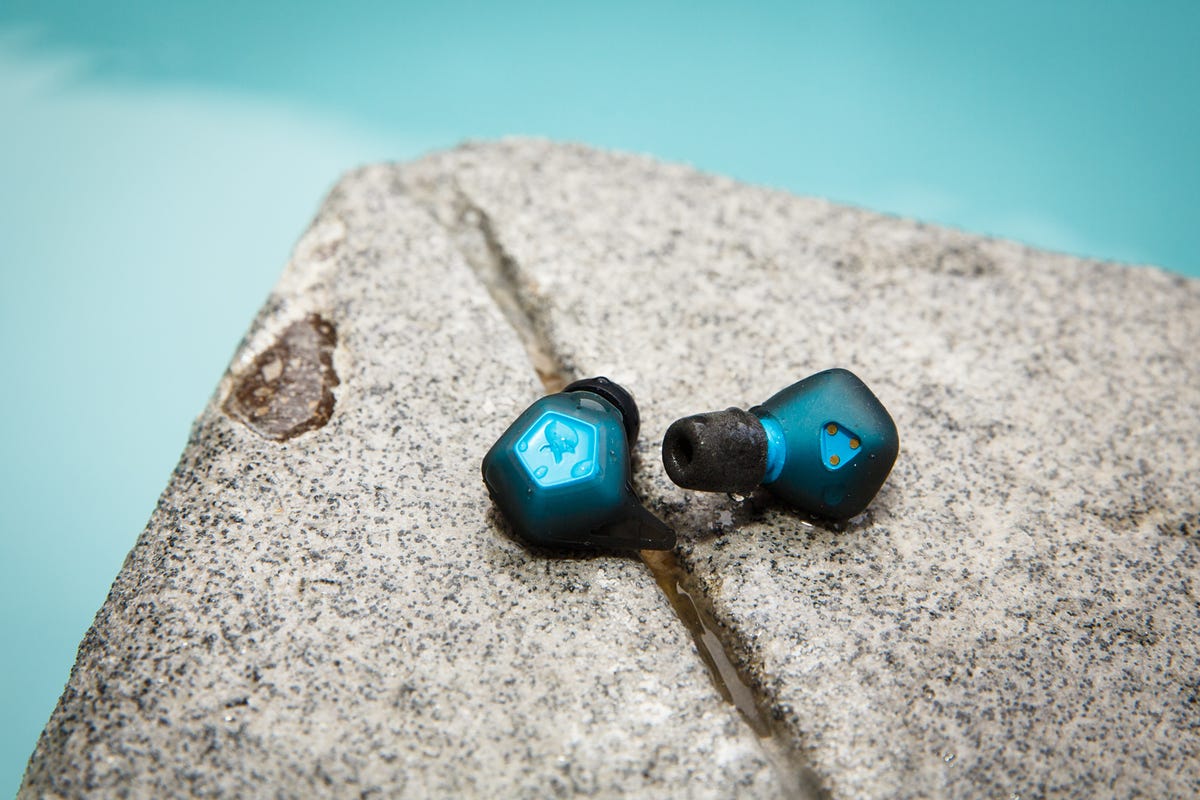

The Konoa wireless earbuds are available for preorder now.
Josh Miller
The Kanoa wireless earbuds are bigger, blue and don a pentagon shape. They’re water-resistant and have optional silicone jackets, making them a more sporty option. Like the Earins above, the Kanoa earphones come with Comply foam earbuds and charge via a carrying case.
The Kanoas have a larger-than-average battery life compared to other wireless earbuds on this list, lasting up to six hours on a full charge, and its accompanying case can recharge them up to five times. The pentagon shape fit snugly in our ears when we tried them on at CES this year, but we’ll wait to give a full report when they finally ship to customers later this year.
The Kanoa earphones are available to preorder now for $199 USD (£150, AU$265).
Bragi The Headphone
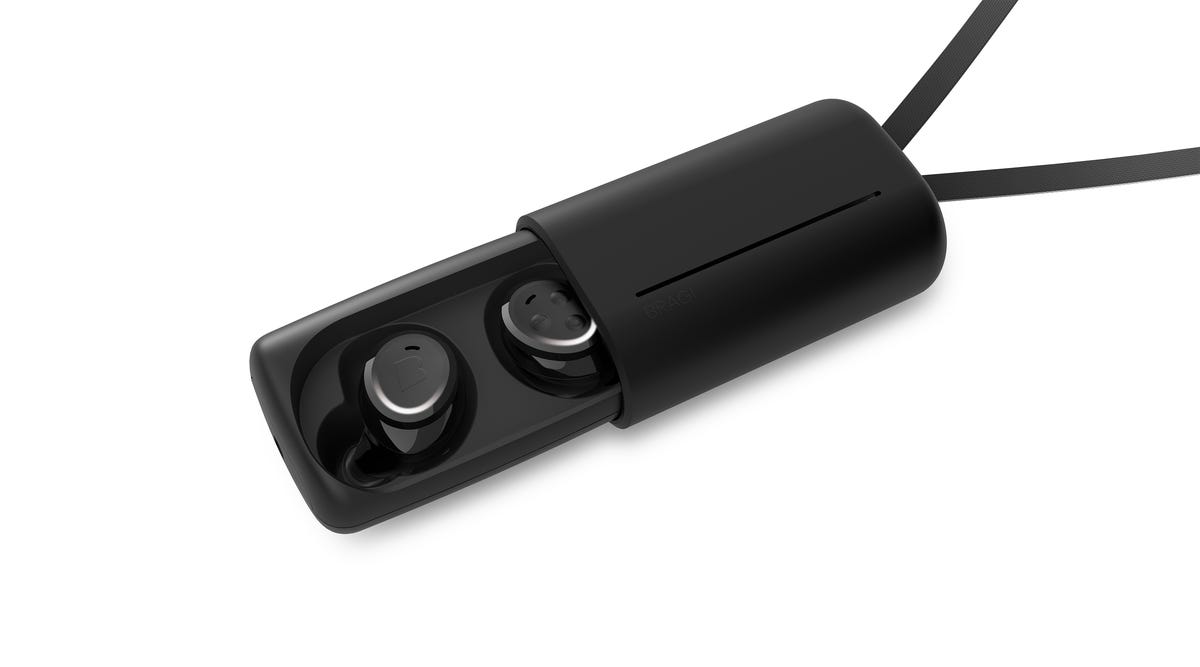

Bragi’s The Headphone is available for $120 until November 1, then goes up to $150.
Bragi
Simple called “The Headphone,” version 2 of Bragi’s wireless earbuds allow users to switch between music, phone calls, voice commands, and the “Audio Transparency” setting that allows ambient noise to filter in so you’re aware of your immediate environment.
We haven’t received review samples of The Headphone yet, but according to Bragi, it’ll come with three different sizes of FitTip tips as well as Bragi OS 2.1, the second major software update for The Dash since its January 2016 launch.
With the software update, the headphone can speak four new languages – Chinese, French, German and Spanish — and now synchronizes with Google Fit, Apple Watch and the Apple Health Kit.
Other Bragi OS 2.1 features include Touch Lock, which prevents inadvertent gestures from impacting the Dash, Shuffle for the internal music player and on-demand heart-rate tracking.
The Headphone by Bragi is available to preorder now for a special price of $119 (£90, AU$155). Following the presale, it will retail for $149 (£110, AU$195).
Jabra Elite Sport
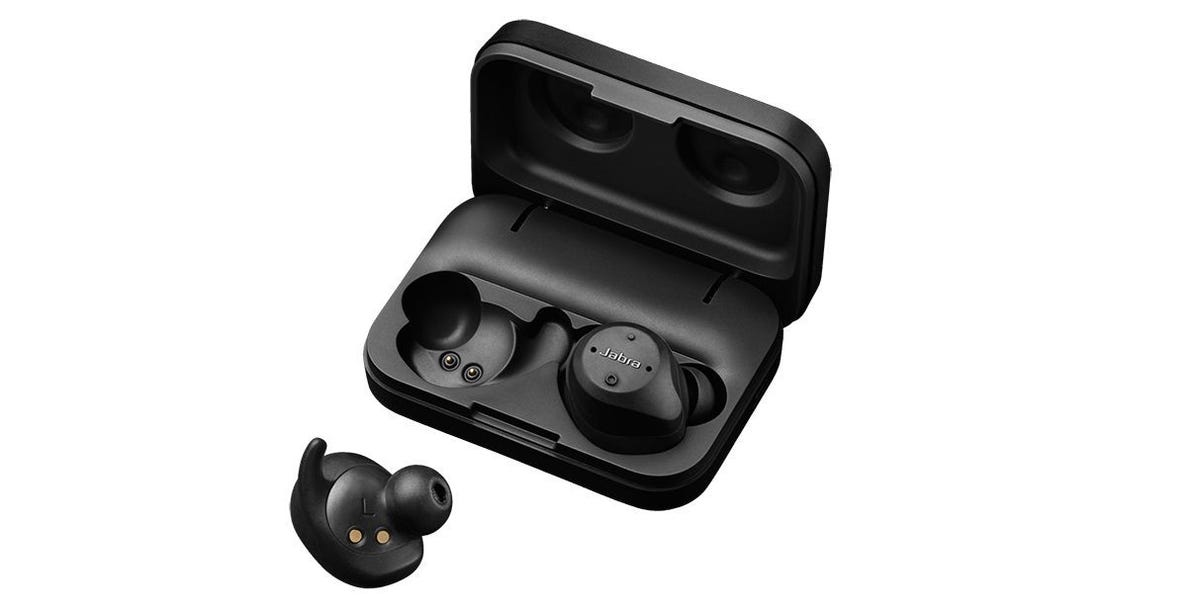

The Elite Sport ships in late September for $250 (£230), with an Australian launch in late October.
Jabra
Jabra enters the zero-wire fray with its Elite Sport, which it calls “the most technically advanced, true wireless sports earbuds available.”
So what makes the Elite Sport so elite? For starters, the buds are fully sweat- and waterproof with an IP67 rating and a three-year warranty to back them up.
There’s also an integrated heart-rate monitor that provides “groundbreaking in-ear fitness analysis” and, as you’d suspect from a Jabra headphone, they work well as a headset for making calls with built-in noise reduction technology.
According to Jabra, the earbuds can analyze external sounds and automatically switch to the earbud with the least background noise, but we haven’t tried them firsthand yet. Like competing products, battery life isn’t great — they’re rated at just three hours of music listening — but it is easy to get extra juice by slipping them into their charging case, which has an integrated battery.
The Jabra Elite Sport will go on sale in the US ($250), UK (£230) and the EU (€250) at the end of October, with an Australian launch slated for later in the year (pricing not yet announced, but US price converts to approximately AU$330).
Amazon potentials
A simple Amazon search for “fully wireless earbuds” yields a handful of results for wireless in-ear models that we can’t personally vouch for, but have received relatively positive four and five-star reviews.
In particular, the Firegram Mini and the Sowtech V4.1 Mini are all interesting for their price alone — both offer wireless music playback for $15 (£11, $20).



